
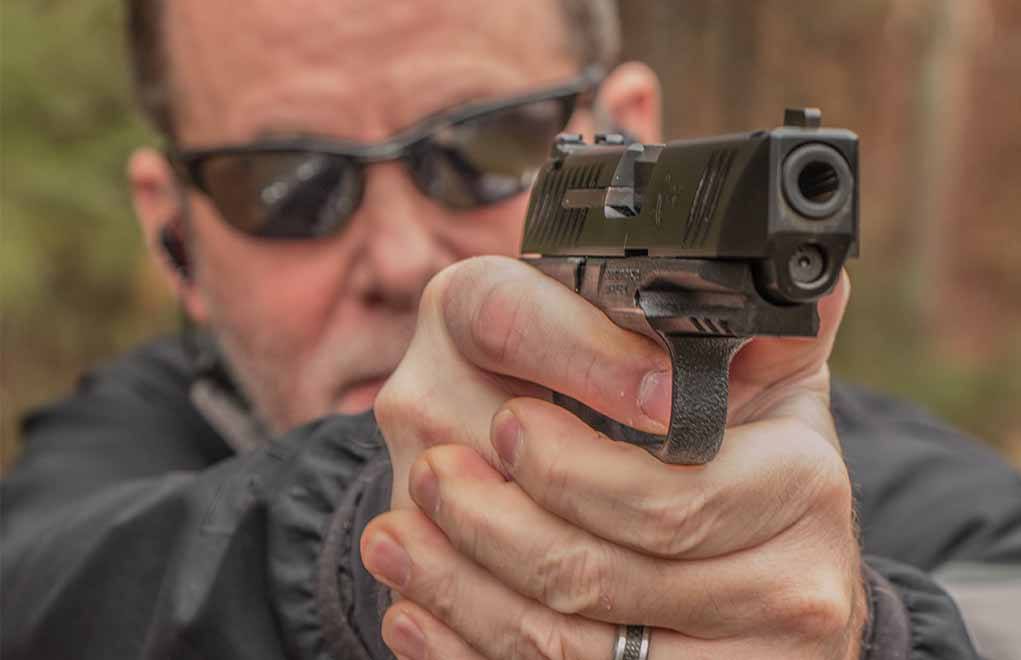
Stopping power is an elusive subject, but well worth consideration when trying to find the most effective self-defense handgun and ammo.
What are the four ways to stop an attacker:
- A shot that will cause bleeding enough to starve the brain of oxygen.
- Hitting the central nervous system.
- Incapacitating them with a shot to the spine or pelvis.
- Inflict enough pain in the attacker he ceases his assault.
The term “handgun stopping power” means different things to different people. In some cases, it’s used to describe ammunition’s ability to stop a bad guy. At other times it’s thought of as a way to value lethality. To understand any explanation of handgun stopping power, it’s important the distinction between “stop” and “kill” is understood. For the use of a defensive handgun to be successful, one of these results is mandatory — the other only sometimes.
If you hunt with a handgun, your goal is to kill your quarry. If you’re using a handgun in a defensive situation, your goal is to stop the assault. These are very different things. If you shoot someone, they might very well die, but any intent on your part to bring about their death equates to murder.
To be clear, we need to start at the beginning. If you pull your pistol after being attacked by some thug and they run off, you have successfully stopped the attack. That’s the most successful execution of handgun stopping power. However, the mere introduction of a handgun is not the debate most concern themselves with. What most inquiring minds want to know is what cartridge and ammunition has the best chance of ending an attack.
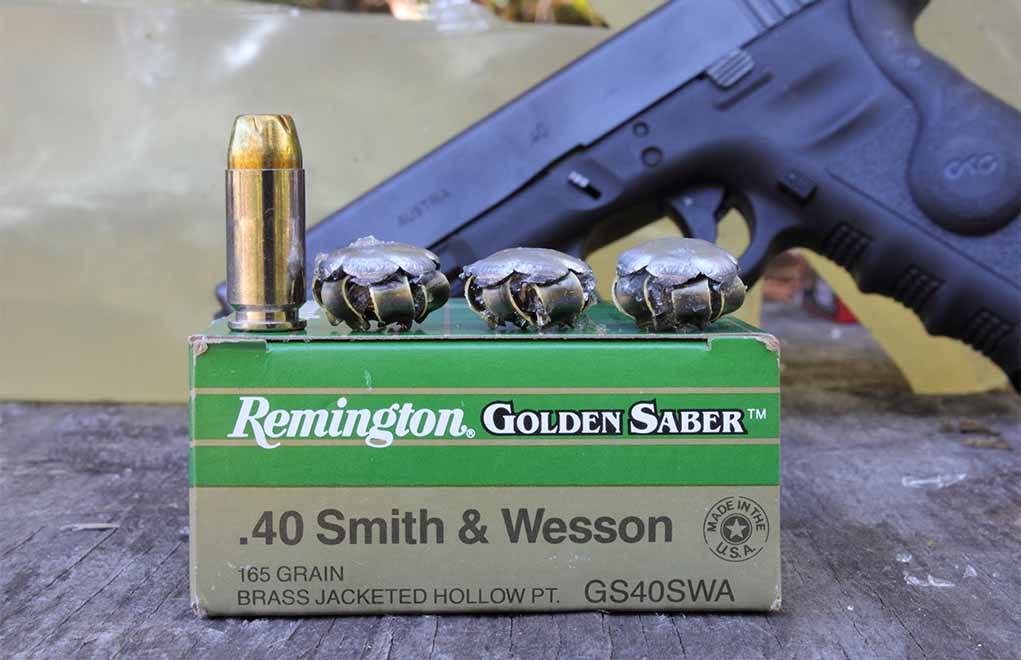
There are several schools of thought: Some believe in high velocity, others in large-caliber heavy bullets. Within these two camps you’ll find disagreement on bullet performance. Some support deep-penetrating bullets, and others want their bullets to deliver dynamic expansion with moderate penetration. Like with every debate, there are the fence walkers who want terminal performance in between both extremes.
Let us examine the facts. Regardless of the cartridge, there’s only so much energy or power that can be directed at a threat. This is balanced by the size of handgun that can actually be carried for protection, and the amount of recoil humans can withstand. Obviously, this will vary from person to person, but the reality is there’s a limit to the power that can be harnessed in a defensive handgun. And, it’s not a lot.
Smashing Other Ballistic Myths:
- .45 ACP vs 9mm: Which Is Better?
- Are Ballistic Gel Penetration Tests Gospel?
- Bullet Expansion: Velocity Is The Deciding Factor
- Is Sectional Density A Good Measure Of A Bullet’s Penetration Potential?
- The Truth About Barrel Length And Velocity
For example, it’s been proven that a .223 Remington has sufficient power to cleanly kill a 200-pound deer. A 60-grain bullet from a .223 Remington will have a muzzle velocity more than twice that of defensive handguns. The kinetic energy produced by the .223 Remington is twice as high as well. So, from a numbers standpoint, even the most potent defensive handgun cartridge is only half as powerful as one of the smallest rifle cartridges.
The key to evaluating handgun stopping power, however, is to look at the goal of using a defensive handgun, and that’s to stop/end the attack. Sure, if you kill the bad guy you have stopped the attack, but let’s again look at deer hunting as an analogy.
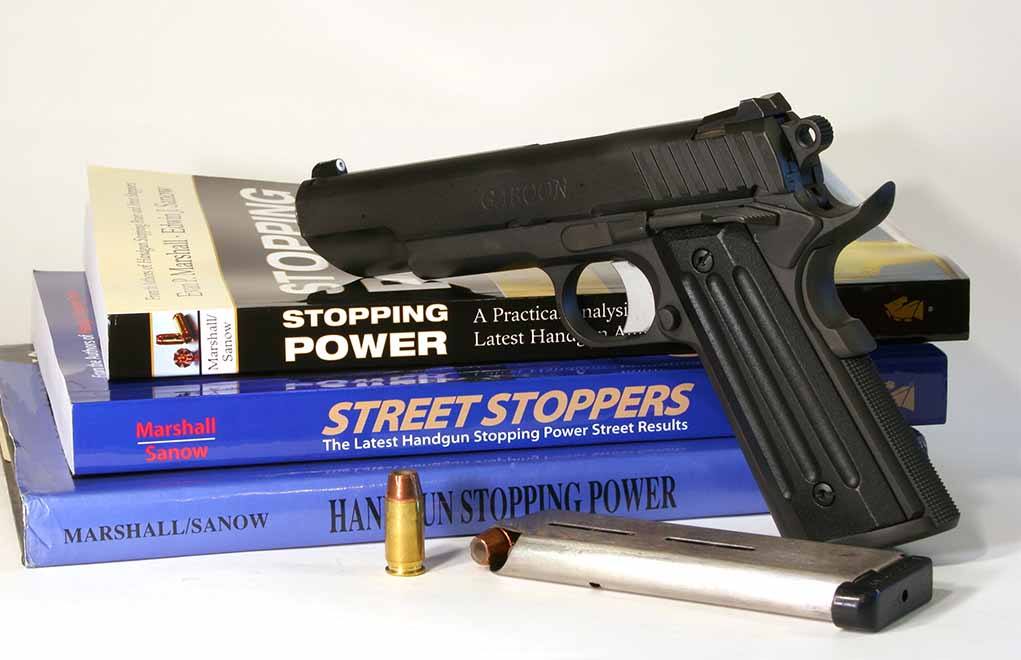
It’s not uncommon for deer to run 50 yards or so after receiving a bullet through both lungs from a centerfire rifle. Why? Animals — deer or humans — die when their brain runs out of oxygen, not immediately following the perforation of the lungs or heart. This can take a few seconds, or even a minute. Trusting your life to that seems rather foolish. If someone is shooting at you or attacking you with a knife, 10 seconds is an eternity. If you’re trying to stop an attacker, you want to do it immediately!
There are essentially three ways to do this. You could destroy their central nervous system with a bullet to the brain. It works and it’s dependable, but it’s difficult to execute. You could break them down with a shot to the spine or pelvis. This might put them on the ground, but these are hard shots to execute and might not stop the attack if the bad guy has a gun, too.
Finally, there’s pain. Pain is the ultimate tool. If you can inflict enough pain, you can stop even the most violent offender. Pain is the one thing all humans respond to in a like manner: If you’re doing something that hurts bad enough, you’ll stop and, most often, stop in one hell of a hurry.
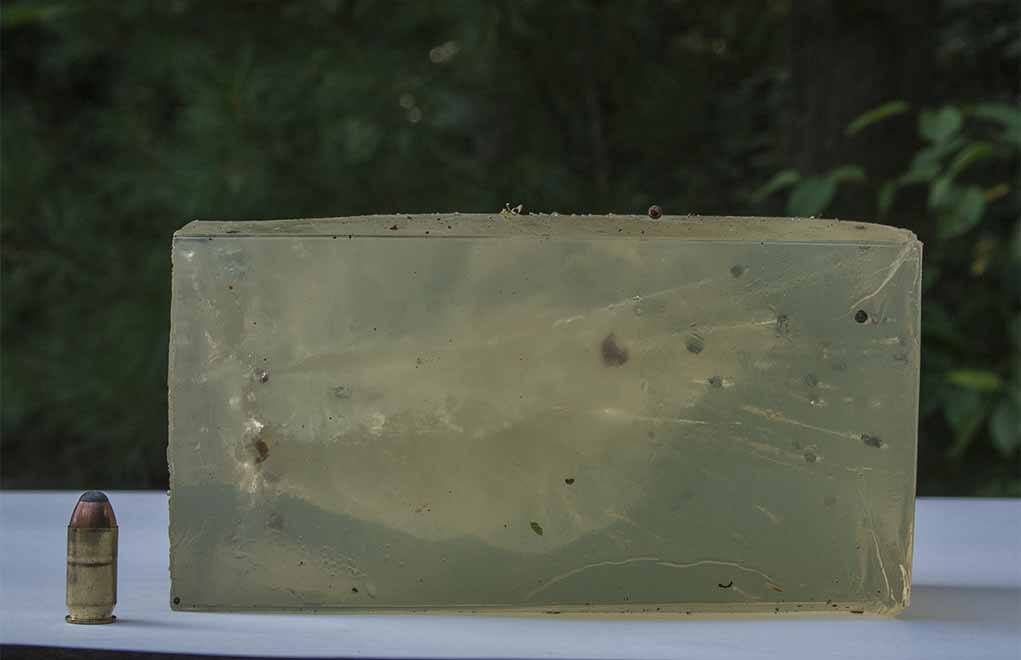
Maybe the best analogy is the classic punch or kick to the groin. Even bad-to-the-bone cage fighters double-over when hit there. It’s not lethal, but when executed to perfection, it works. Another example is hitting your thumb with a hammer. It’s not lethal either, but few things will make you stop and begin a foul-mouth soliloquy as fast as a smashed thumb. Logic dictates the handgun with the most/best/fastest stopping power is one that inflicts the most pain. But, which one is that?
I don’t know the answer and doubt anyone ever will, but we can make some valid assumptions. Let’s look at two extremes. A non-expanding bullet will most often punch a hole clean through an attacker. If the bullet does not hit bone, a small-diameter hole is what you’re relying on to submit your assailant. If the bullet does hit bone — there’s about a 50 percent chance of this — bone fragments will be driven through the body, damaging more tissue.
On the other hand, a bullet like the Glaser Safety slug, loaded with either No. 6 or No. 12 shot, will not penetrate very deep, but it will create a nasty, shallow and wide wound. I’m not a doctor, but after talking with and examining gunshot victims, it’s clear to me which one would hurt the most. That itty-bitty hole will not damage near the amount of tissue as the Glaser Safety slug, and as any reasonable person would conclude, the more tissue that’s damaged, the more it will hurt.
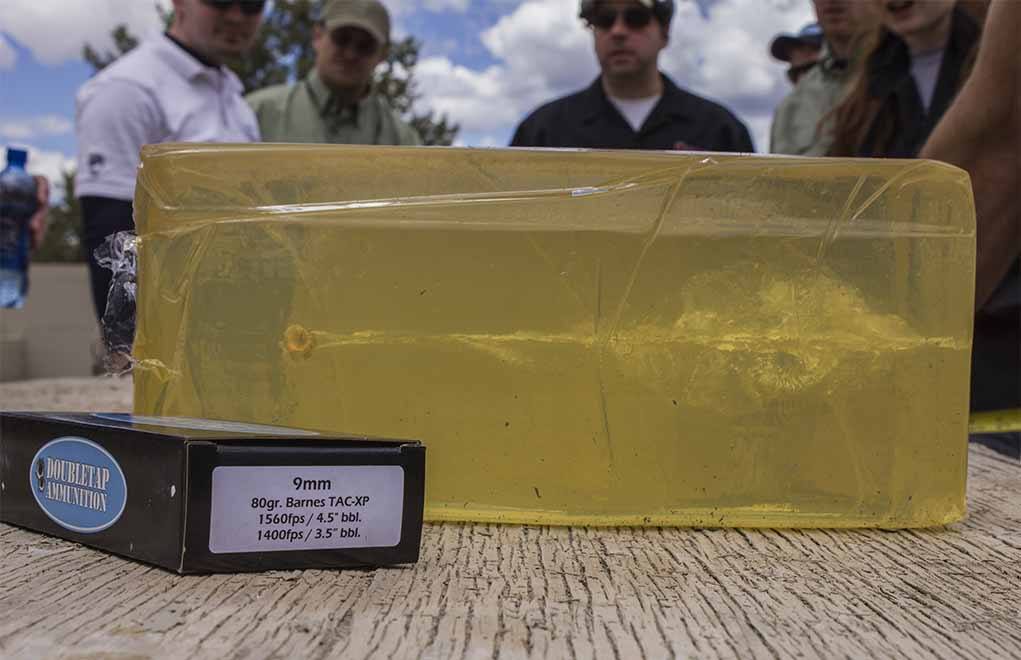
This should be obvious. Compare the thumb smashed with a hammer to a bad cut with a knife. The knife wound is infinitely scarier and potentially more dangerous, but cuts rarely hurt very much at all because there’s less tissue that’s traumatized. Pain is the ultimate equalizer.
The problem is, we cannot count on pain because many human predators are also quite fond of mind-altering drugs. If you’ve ever been on prescription medication, you know how effective narcotics can be at blocking pain. A crackhead might let you smash every finger he has with a hammer and only smile before he proceeds to turn you into a statistic.
So, if we cannot rely on pain or punching a hole through an attacker’s torso, what’s the answer? Logic says that if one option is too much and the other is not enough, balance must be sought. Balance, with regard to the terminal performance of defensive handgun ammunition, would be bullets that expand wide and dynamically damage a lot of tissue, while at the same time penetrating deep enough to pass through as much of the bad guy as possible.
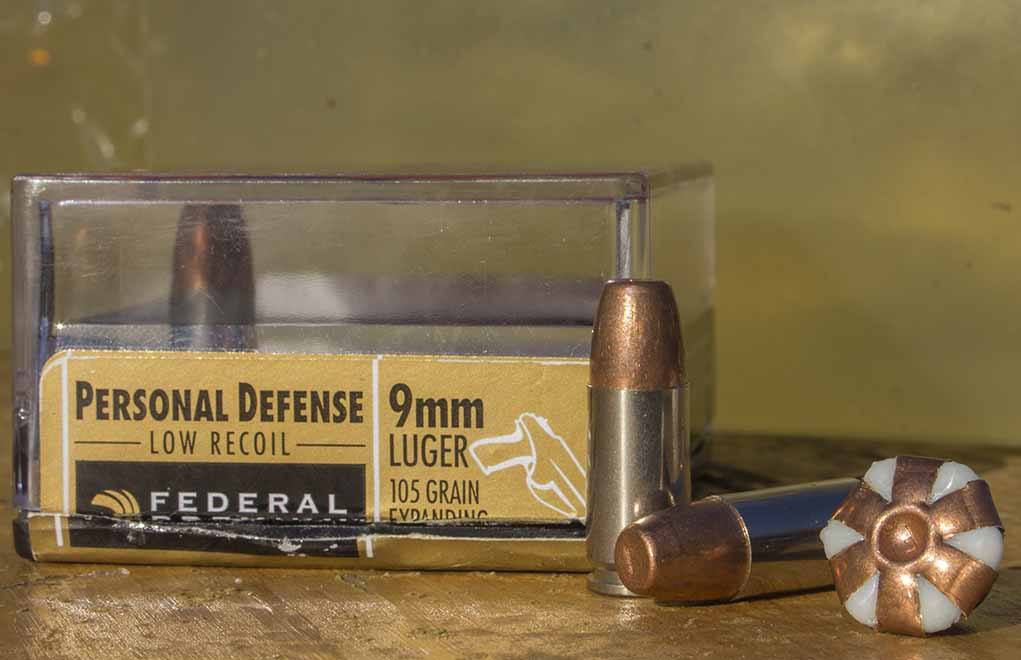
Let’s assume an attacker is beating you with a club and you shoot him through both lungs. The troll is so high on methamphetamines that he feels nothing and continues to beat on you. But, that hole will eventually pay off: His brain will starve from oxygen deprivation and he’ll lose consciousness. Very likely, if medical aid is not rendered quickly, he’ll die.
Calculating the real-world stopping power of any handgun cartridge is impossible; we cannot predict a gunshot victim’s response. However, we can predict with some certainty how much damage a bullet might do. Short of some pain-measuring device, that’s really all we have to go on
Editor's Note: This article originally appeared in the April 2019 issue of Gun Digest the Magazine.

Next Step: Get your FREE Printable Target Pack
Enhance your shooting precision with our 62 MOA Targets, perfect for rifles and handguns. Crafted in collaboration with Storm Tactical for accuracy and versatility.
Subscribe to the Gun Digest email newsletter and get your downloadable target pack sent straight to your inbox. Stay updated with the latest firearms info in the industry.

![Best Concealed Carry Guns In 2025 [Field Tested] Wilson Combat EDC X9S 1](https://gundigest.com/wp-content/uploads/Wilson-Combat-EDC-X9S-1-324x160.jpg)


![Best 9mm Carbine: Affordable PCCs [Tested] Ruger Carbine Shooting](https://gundigest.com/wp-content/uploads/Ruger-Carbine-Shooting-100x70.jpg)
![Best AR-15: Top Options Available Today [Field Tested] Harrington and Richardson PSA XM177E2 feature](https://gundigest.com/wp-content/uploads/Harrington-and-Richardson-PSA-XM177E2-feature-100x70.jpg)
